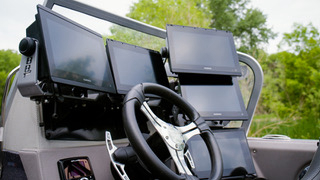Handloading Rationale
By Glen Wunderlich
Outdoor Columnist
Member Professional Outdoor Media Association
If you have settled on a caliber and outfitted your long-range rifle with good glass, it’s time to decide what to feed it. There’s some pretty good store-bought factory ammo, which is all relatively accurate but always costly. Unless you handload and you can’t get the fancy fodder to shoot 1-inch groups or better at 100 yards, you can go back to the store for another brand or settle for “good enough”. Understand that guns are like people in that they are what they eat; that’s why I feed them custom handloads. There’s no better time than the off-season to learn and practice the techniques of loading your own ammunition.
First, I don’t refer to the meticulous, quality-controlled process of custom loading as “reloads”, which implies cheap, unreliable compromises for quality. There’s nothing wrong with reloading hundreds of .38 special target loads with lead bullets and lightweight powder charges for practice. However, using new brass cases and components, cannot be considered reloading. Factories print lot numbers on boxes signifying unpredictable variations with changes in the numbers, but with detailed records of components, powder charges, and measurements, I can reproduce the exact same ammo years later. I load for performance. Period.
When it comes to rifle ammunition produced in factories, it’s made from top-of-the line brass, primers, powder and bullets and still cannot perform like my home-brewed tonic. Mass-produced ammo doesn’t get the quality control I demand. Additionally, the factories must produce one-size-fits-all ammunition for one simple reason: Not all firearms of like calibers have the same chamber sizes; the minimum to maximum chamber sizes can vary substantially. Factories, therefore, produce ammo short enough to fit into any manufacturer’s firearms. While this makes for reliable function, it does not necessarily meet the needs of a precision varminter. If I were to choose only one reason I handload, it is because I can produce ammunition custom-fit to my firearms.
With tools of the trade (overall case length gauge, bullet comparator, and dial caliper), I precisely measure the maximum overall cartridge length, and then seat the bullet to within 10,000ths of an inch of engaging the lands of the bore. Although there are myriad other variables to manipulate, close-tolerance bullet seating depth typically gives me the edge over the factories’ finest. Plus, some of the big guys’ stuff is on the tame side, so as not to harm grandpa’s gun that might not stand the punishment of higher pressure offerings. Not that mild is necessarily bad, but if I want maximum horsepower, I just add a little “octane”.
While we are on that subject, a word to the wise is in order. Novice handloaders may have an urge to begin by loading for maximum velocity. That’s a foolish idea for two reasons: 1) Any reference material warns to begin with lighter powder charges and urges one to check for pressure signs (flattened primers, etc.) before proceeding to anything approaching maximum listings, and 2) Maximum velocity hardly ever equals maximum accuracy. If you want something faster, refrain from pushing the envelope; step up to another caliber that will satisfy your need for speed.
As mentioned in a previous column, if you’ve chosen a high-end rangefinding reticle scope, its precision potential ranging is rendered useless unless you can match a load to its built-in trajectory scale.
A few years ago I forked over some hard-earned cash for a guided Montana elk hunt. Since there was the potential for long-range game getting, I custom-loaded some premium bullets for my rangefinding Shepherd optics atop a tricked out Browning A-Bolt in .300 Winchester Magnum. The scope came with a chart listing specific bullets at specific velocities that purported to be on target (i.e. minute of angle) at 1,000 yards. So, I loaded a couple of the specified premium test bullets with my usual charge of IMR 4350 powder, launched it through my chronograph and discovered it was 250 fps too fast. Through experimentation, I reduced the powder charge, until I got it right on the velocity mark specified by Shepherd. The beauty of this testing was that I only loaded 2 rounds per variation until I got it right and didn’t have to spend $30 a box at the local sporting goods outlet on stuff that wouldn’t work.
After an initial sight-in confirming a close-range zero, off to a safe shooting zone at a nearby field I went to set up a distant target at an unknown range. Pow! Peering through the spotting scope, I found it right in the black. Making sure it wasn’t a fluke. Pow. Right in the black, 2 inches from the first shot. Confirming the distance with my laser rangefinder, I learned I had just placed those shots on target at 356 yards as quick as you can say Missoula.






